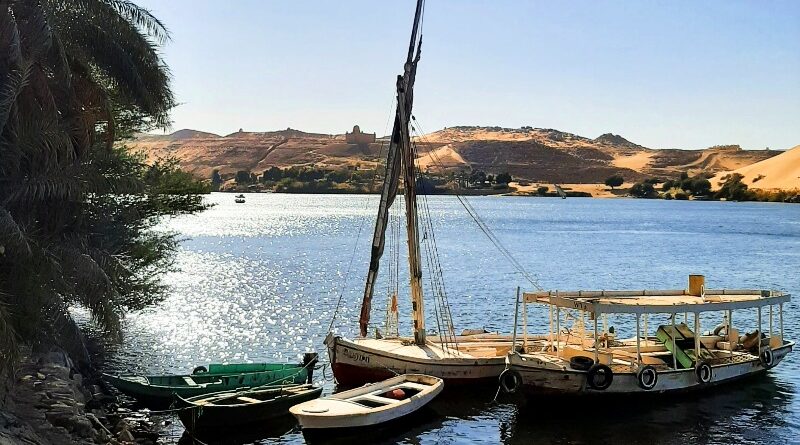A Visit to the Nubian Village on Aswan’s Elephantine Island
In this destination guide, we’ll take you on a visit to the Nubian village on Elephantine Island in Aswan.
Free time
Having previously visited the Unfinished Obelisk, Philae and the Aswan High Dam as part of my Nile cruise tour in the late morning and early afternoon, we drove to the river boat where I could finally check into my room.
However, I didn’t stay long on board. In the programme of the Nile cruise was free time for the rest of the afternoon and as I only had this day remaining to explore Aswan, I wanted to make the most of my time.
There were some interesting options for optional guided tours through Aswan, with the tour to some of the Nubian villages around Aswan being the most appealing.
Due to budget constraints and me wanting some time on my own before the start of the cruise, I however decided to embark on a visit to one of the Nubian villages myself.

Elephantine Island
Of all Nubian villages which you will find in this part of Egypt, the village on Elephantine Island is surely the one which is most easily accessible.
Elephantine Island is located in the middle of the River Nile just a few hundred metres from downtown Aswan.
Ignore all the touts and boatman at the corniche trying to convince you to take a private boat transfer or a short cruise on a felucca (traditional wooden sailing boat) as there are much cheaper public ferries available.
Although there are two public ferry routes linking Aswan with Elephantine Island, the easiest to find is the one departing from the jetty right behind the KFC on the corniche.
At the KFC, just walk down the steps towards the Nile embankment and wait for the first public ferry to arrive.
A ferry ride between Aswan and Elephantine Island costs only 5 EGP (0.28 EUR) per person, which you pay to the boatman.



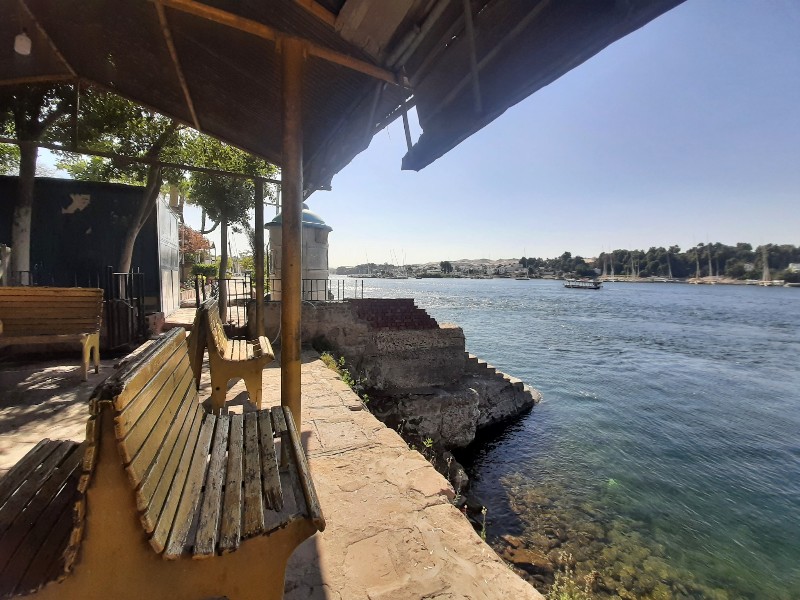




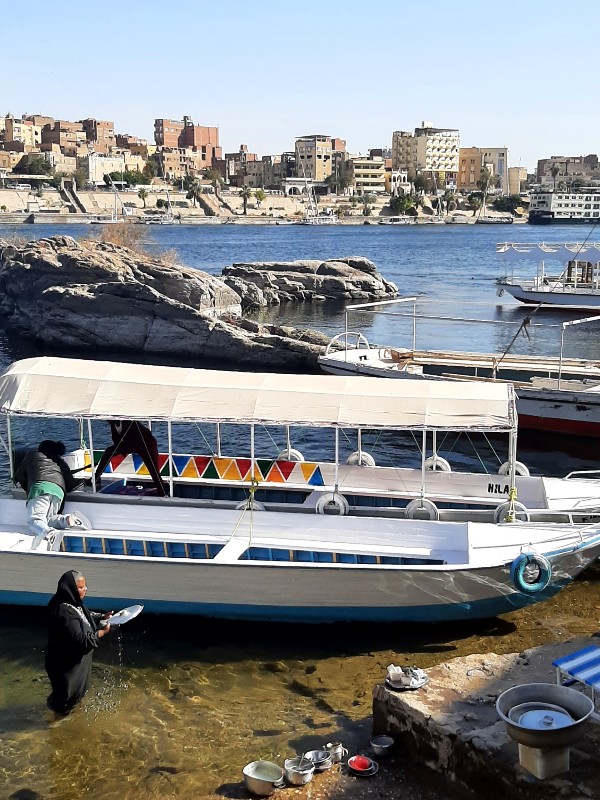
Nubians
Before it’s time to explore the Nubian village on Elephantine Island let me first tell you something about the Nubians.
The Nubians are an ethno-linguistic group of people indigenous to the Aswan-area of southern Egypt and northern Sudan, a region which was called Nubia throughout history.
Culturally, Nubians differ from Arabic Egyptians even though the two groups have intermarried and Nubians have mixed with other ethnic groups as well.
However, most Nubians still have a noticeable darker skin colour and other physical characteristics not dissimilar to the people living in sub-Saharan Africa.
If you want to learn more about the Nubians living in and around Aswan, I can recommend this BBC article.
Exploring the Nubian village
Although you will without doubt get more out of your experience if you visit with a guide, you can still get an excellent impression of Nubian village life by walking across Elephantine Island yourself.
There are a couple of small sand paths crisscrossing Elephantine Island and I would strongly suggest to just start walking in a random direction following your eyes and instinct.
Although it’s easy to get a bit lost, you can also easily orientate yourself again using Google Maps or a couple of landmarks on the opposite banks of the Nile.
The Nubians living on Elephantine Island are also an extremely friendly bunch of people and will gladly tell you the directions back to the jetty when you want to turn back to Aswan.

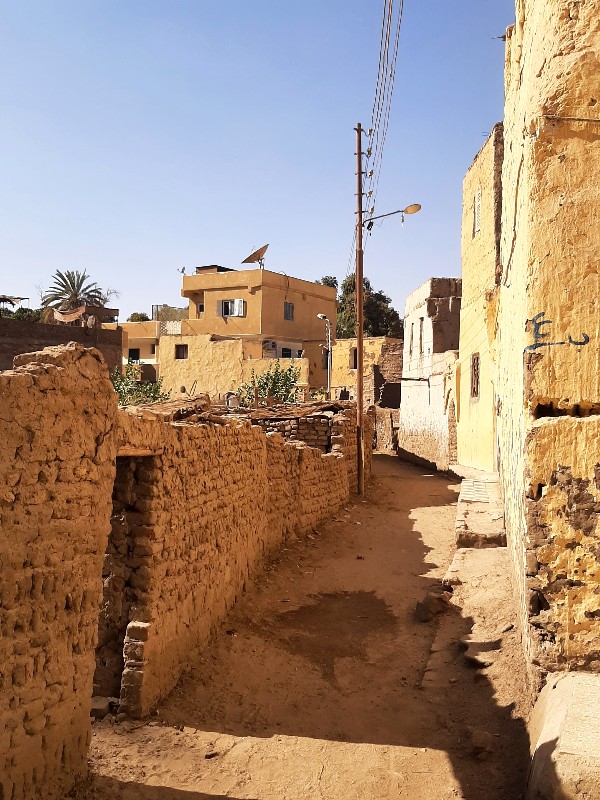


Inside the village
Compared to the chaotic Arabic city life of Aswan, you will instantly notice how much more of a sub-Saharan African feel the Nubian village has.
The buildings are more colourful, the streets are more narrow and the general atmosphere is much more pleasant.
It was certainly a breath of fresh air to walk around the Nubian village as compared to Aswan’s corniche with its near-constant hassle you are left alone in peace here.
On Elephantine Island, the Nubian locals just greet you out of politeness, with some even wishing you a warm welcome to their village.
It seemed that nobody had any ulterior motives. There were no touts, no sales pitches, nobody asking for money and no tricksters. It was all genuine friendliness.



Fields and houses
Elephantine Island is much larger than just the Nubian village alone and soon after I cleared the houses I found myself between the palm trees and agricultural fields.
Walking through this lovely greenery felt certainly pleasant as well, especially given that the day before I was still in the middle of the mad urban jungle which is Cairo.



Western shore
If you visit the Nubian village on Elephantine Island, it is an absolute must to walk right across it to its western shore.
From this far edge of the Nubian village you have the perfect view over the huge yellow-coloured sand dunes on the west bank of the River Nile.
It’s such a serene and highly scenic spot that you just want to pause here for a while to absorb the beautiful, unforgettable views.
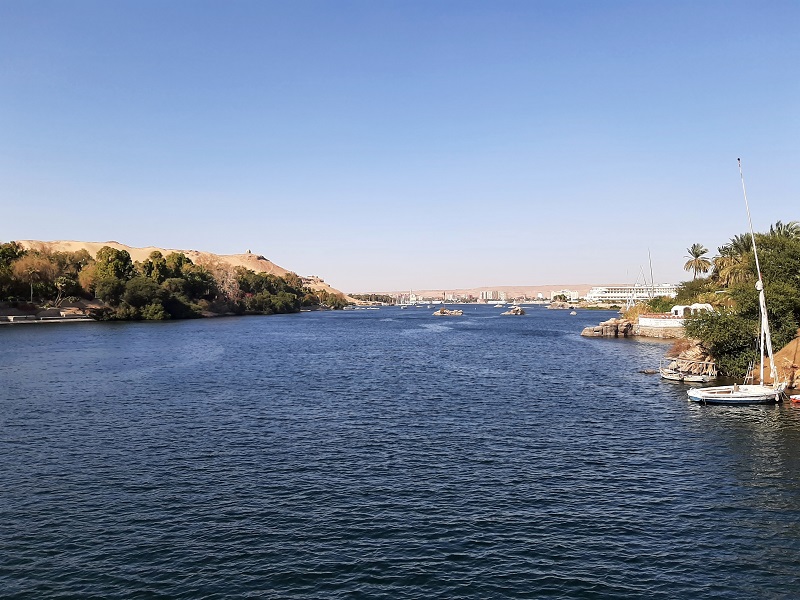

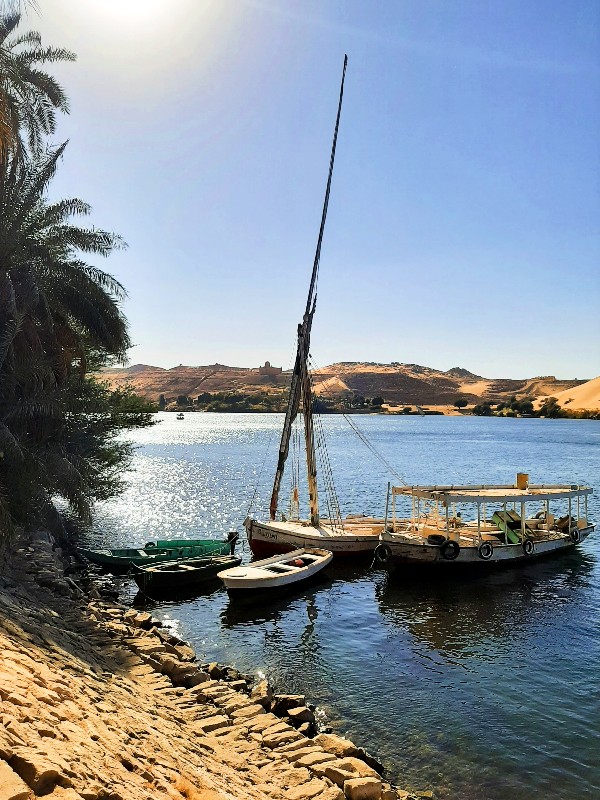

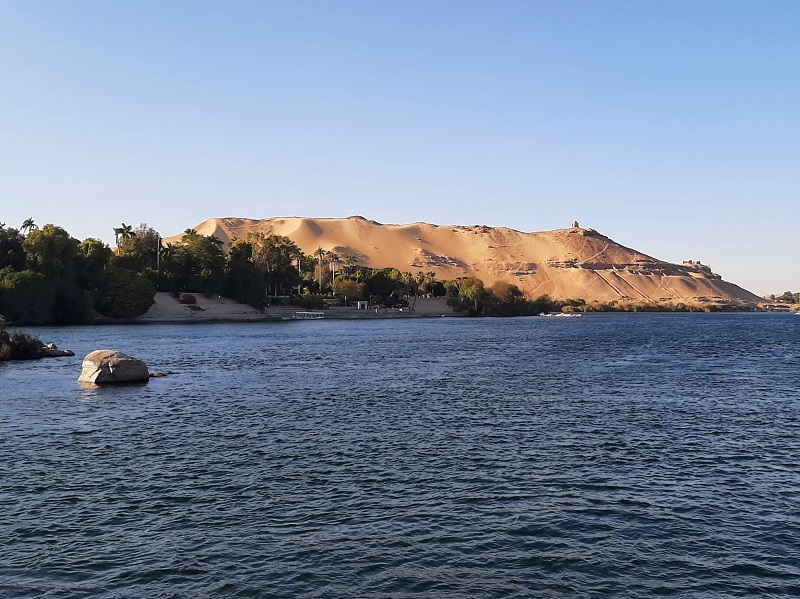

Along the river
Once I had reached the western shore of Elephantine Island I had two choices: I could turn north or turn south along the water.
As the northern half of Elephantine Island is dominated by the Mövenpick Aswan Hotel, it is by far the least interesting bit to explore.
It was therefore a logical choice to head further south along the western shore.
A rudimentary path hugs the shoreline and its great fun to walk across its entire length as you will come across some scenic viewpoints and some interesting parts of the Nubian Village.
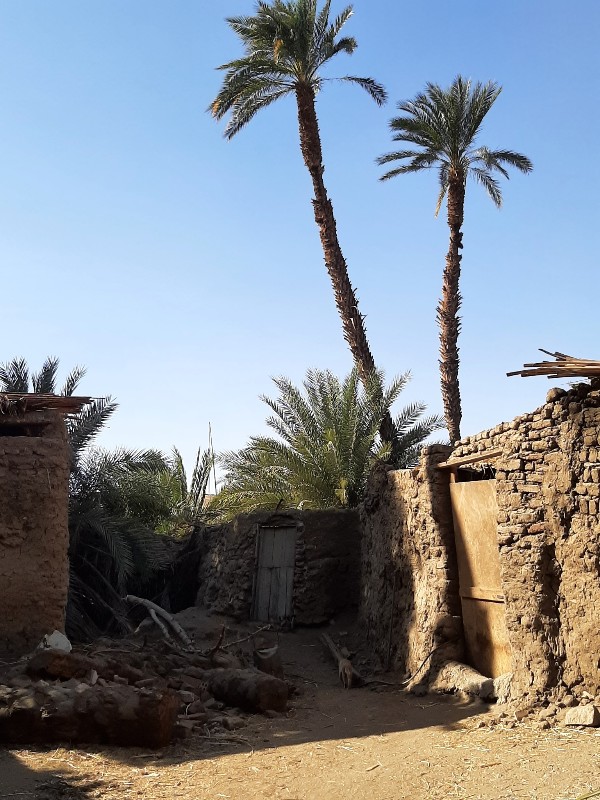



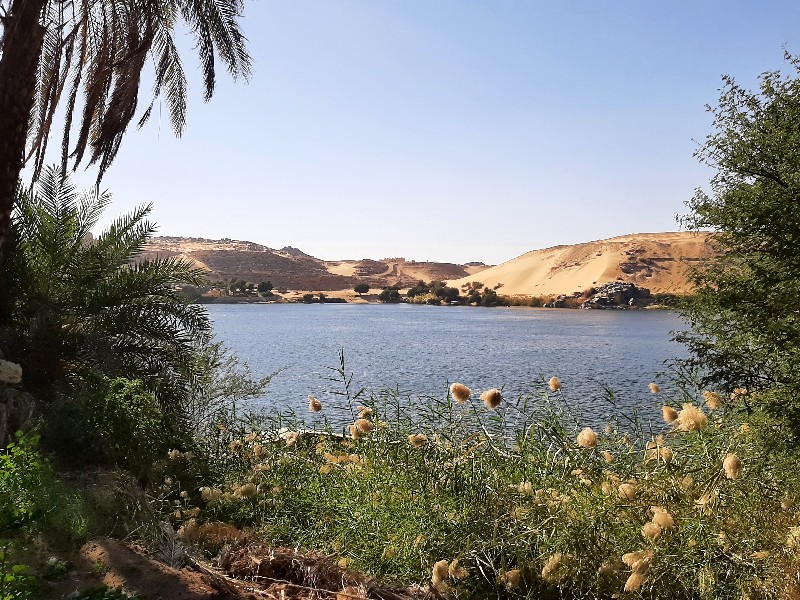
Cataract
Another good reason why you should visit the Nubian village on Elephantine Island is the great, up-close view of the First Nile Cataract from its western shore.
The Cataracts of the River Nile are shallow stretches and rapids in the river.
There are six such cataracts located on the Nile between Aswan in Egypt and Khartoum in Sudan and historically they formed natural barriers which were difficult to pass.
Especially outside of the flood season when the water level was at its lowest it prevented crossings between south and north.
The First Cataract of Aswan is characterised by both shallow stretches and rapids as well as barriers in the form of dozens of boulders, islets and islands dotting the river.
In ancient times, it was an excellent natural border which prevented incursions from the Nubian kingdoms to the south.
By exploring the western shore of Elephantine Island you will get a good impression of the First Nile Cataract.
The Nile at Aswan with its many boulders, river rapids and islets really feels like a different world compared to how the river looks downstream in Cairo.


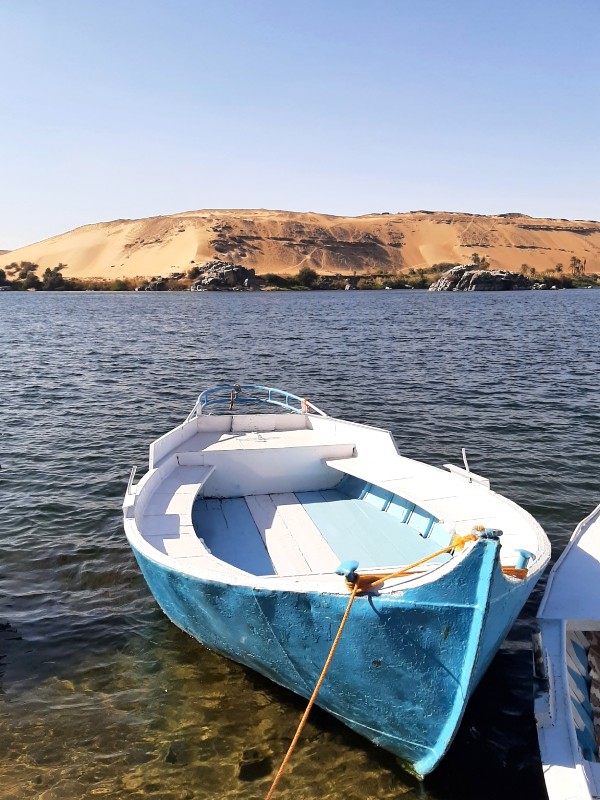




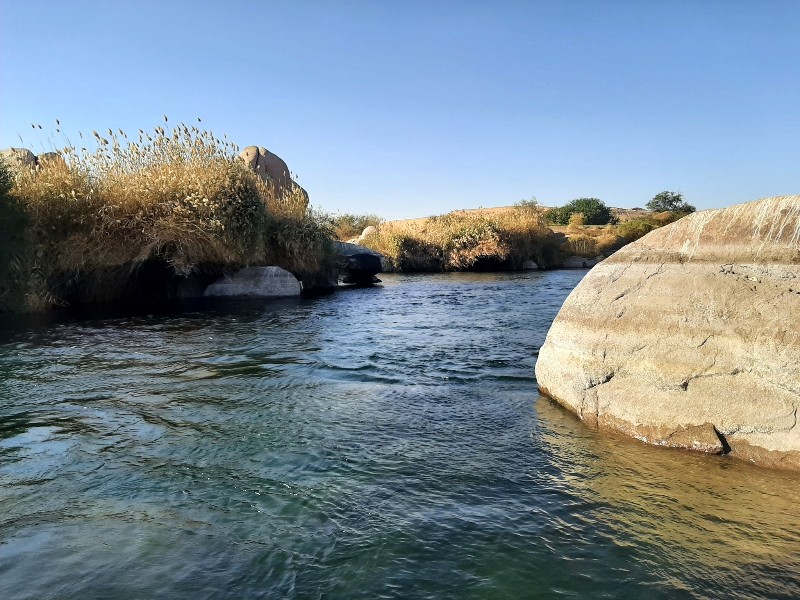
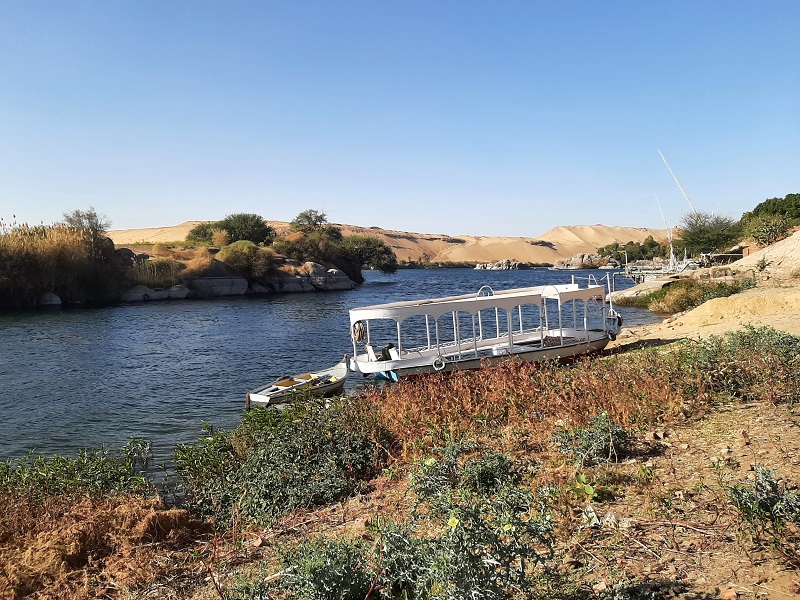

Back into the village
Having reached the south-western tip of Elephantine Island, it was time to head back into the Nubian village and to explore the wonderful streets and alleys a bit more.
From the impressive domed building with its fine traditional mud-brick architecture, I wandered aimlessly around the southern portion of the Nubian village.
It was certainly interesting to see local village life in action, such as shipwrights doing some maintenance work on a traditional wooden felucca sailing boat and women washing clothes and hanging them up to dry.
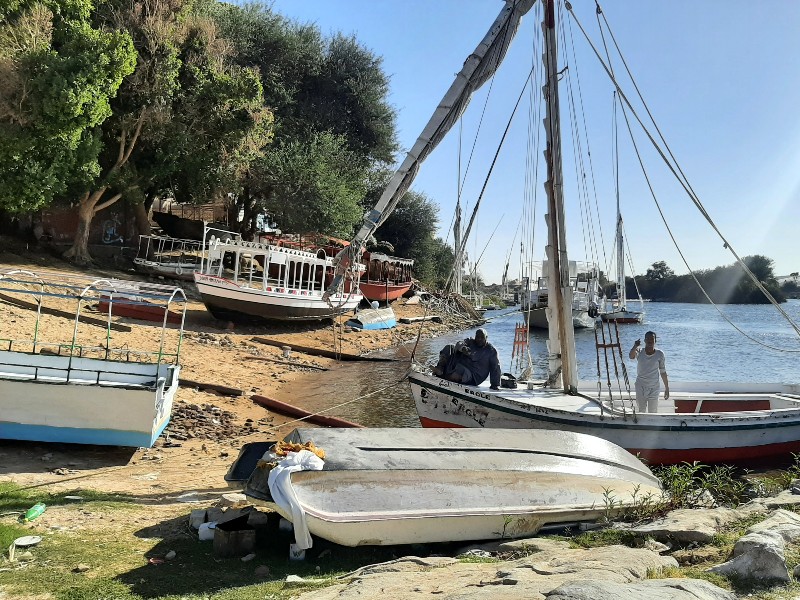



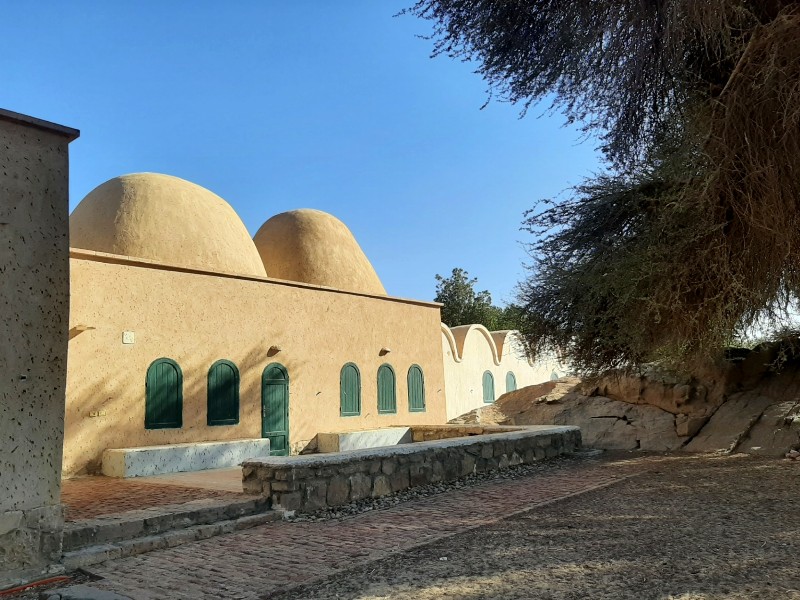
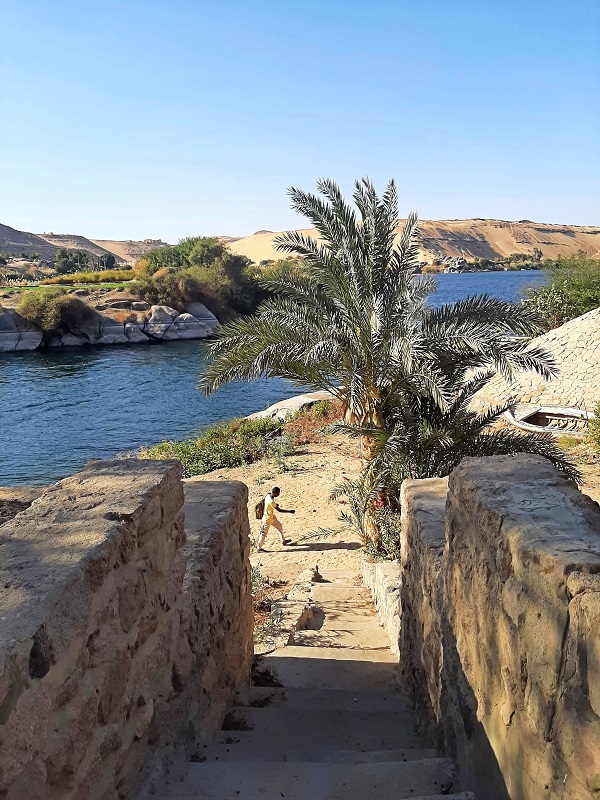



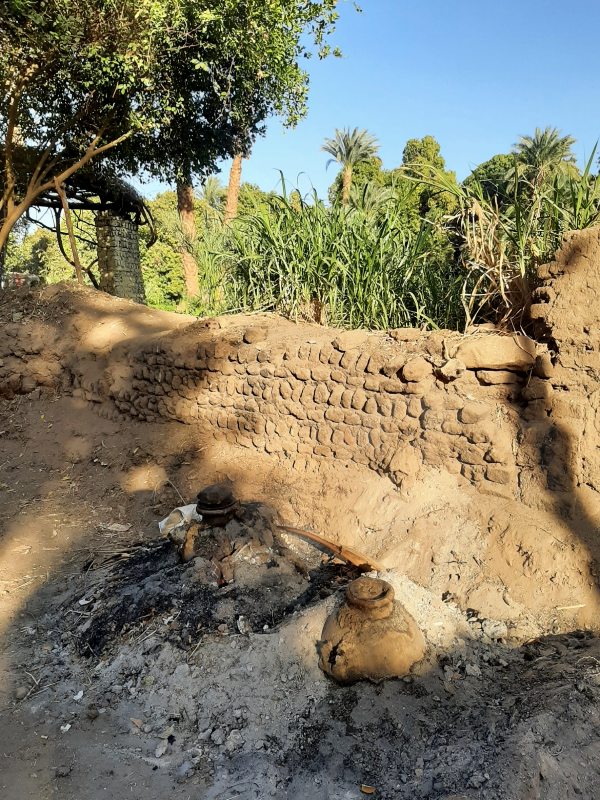

Nubian art
One thing which I love about Elephantine Island is all the street art you can see, something which is typical for Nubian culture and which you will see in any other such village as well.
Whether its the brightly painted houses in all colours of the rainbow, the wood carvings on doors or some cool murals, the Nubian village is certainly a different world compared to Aswan’s cityscape.
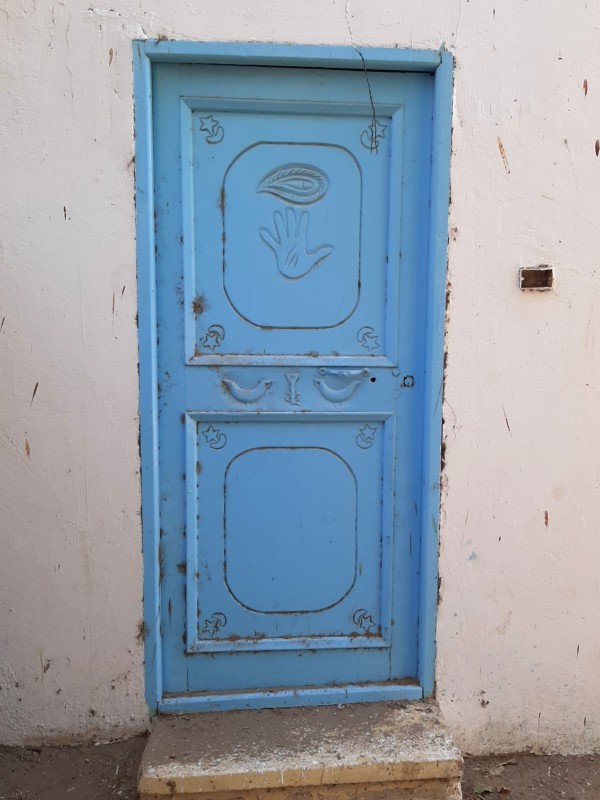

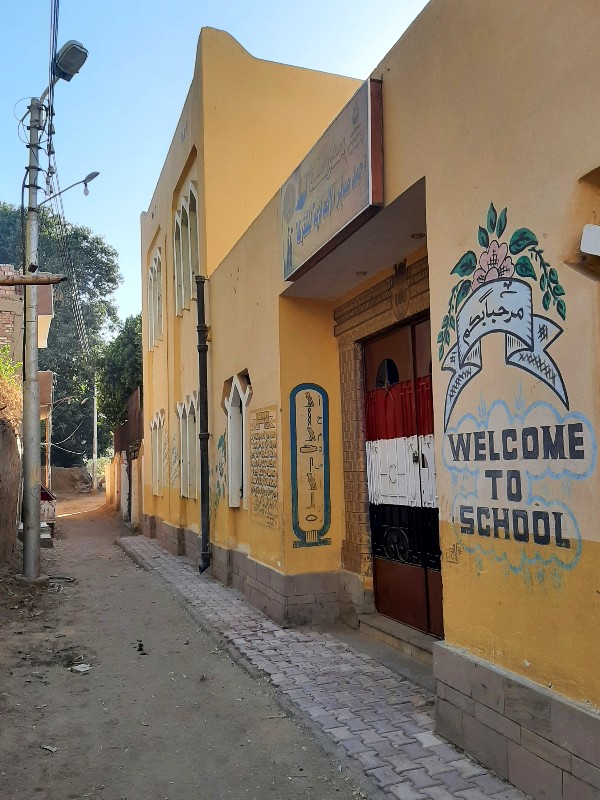
Temple of Khnum
On the southern tip of Elephantine Island, you can also find a museum as well as the ruins of the ancient Egyptian Temple of Khnum and the Temple of Satet.
Unfortunately, I didn’t have time to visit those two temples as I only had limited time during my only day in town.
Although quite minor temples and for sure less grandiose than the temples at Philae and Abu Simbel outside of Aswan, the temples of Khnum and Satet should still make for a worthwhile visit if you have time.
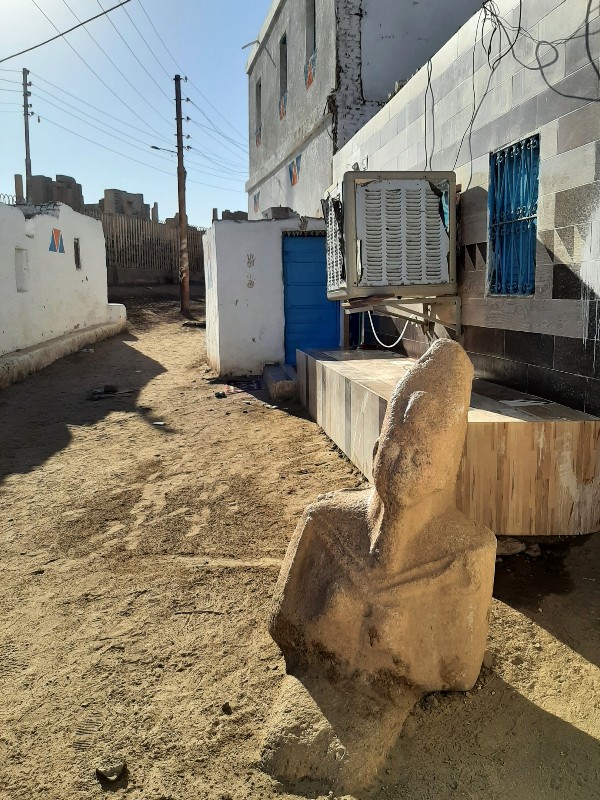
Back towards the jetty
Unfortunately, my time on Elephantine Island was slowly coming to an end.
Given that I still wanted to visit some sights in Aswan proper, it was time to find my way out of the Nubian village and reach the ferry to take me back from Elephantine Island to the mainland.
However, I was enjoying the wonderful surroundings of the Nubian village so much that I simply refused to ask any local for directions.
Instead, I simply wandered around until I managed to find the southernmost jetty (different from the one I arrived at) myself.
Again, a boat was just departing when I arrived, so I had to wait for another 20 minutes or so until a ferry arrived to take me back to Aswan’s corniche.

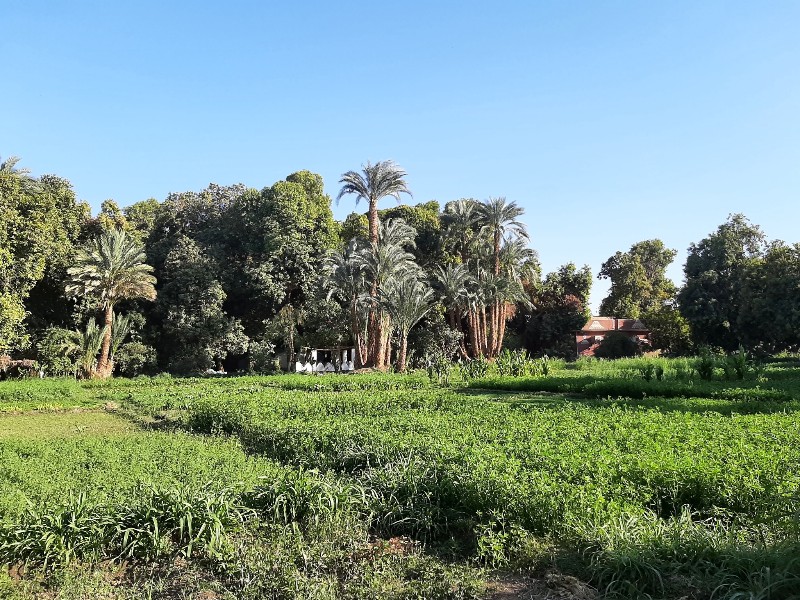






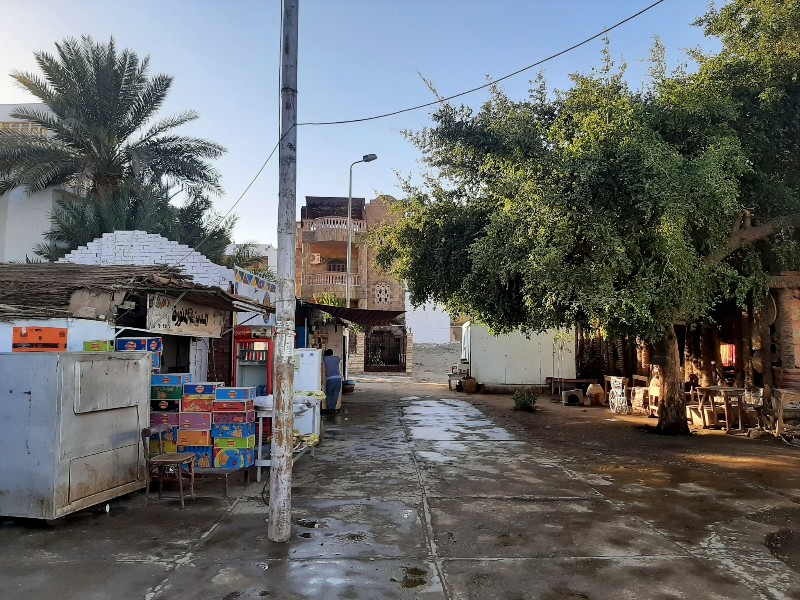



Conclusion
My visit to the Nubian village on Elephantine Island was an unexpected delight. I absolutely loved the peaceful, serene atmosphere of the Nubian village and the interesting insights into Nubian culture and daily village life.
There is just something special to the atmosphere on Elephantine Island, which is such a wonderful place to explore at leisure.
Part of the fun is just wandering around the small alleys of the Nubian village, discovering new sights and scenic spots around each corner.
With its fabulous views over the massive sand dunes right on the banks of the River Nile, the western shore of Elephantine Island is arguably the most stunning part.
Here, you also have a great view over the First Cataract of the Nile with its rapids, shallows, boulders and dozens of islets.
Whether you come for its natural beauty or the cultural insights, the Nubian village on Elephantine Island is an absolute must-visit when you find yourself in Aswan.
Trip report index
This article is part of the ‘Walk Like an Egyptian: A Grand Tour of Egypt‘ trip report, which consists of the following chapters:
1. Red-Eye Ramblings of a Late Night Flight to Cairo
2. A Visit to the Pyramids of Giza by Camel
3. Review: Sofitel Nile El Gezirah, Zamalek, Cairo
4. Exploring the Medieval Old Town and Islamic History of Cairo
5. Visiting the Museum of Egyptian Antiquities in Cairo
6. Mar Girgis: The Churches of Christian Old Cairo
7. Review: Ernst Watania Sleeping Train Cairo to Aswan
8. The Ancient Quarry of Aswan and the Unfinished Obelisk
9. A Boat Ride From Aswan to the Temple of Isis at Philae
10. A Visit to the Aswan High Dam and Lake Nasser
11. A Visit to the Nubian Village on Aswan’s Elephantine Island (current chapter)
12. Aswan Guide: A Visit to Egypt’s Most Stunningly Located City
13. A Half Day Trip From Aswan to Amazing Abu Simbel
14. Nile River Cruise Guide: All Info for Your Egypt Boat Trip
15. Review: M/S Princess Sarah Nile River Cruise Ship
16. Nile Cruise: Sailing From Aswan to Kom Ombo
17. A Visit to the Ancient Crocodile Temple of Kom Ombo
18. A Visit to the Temple of Horus at Edfu
19. Nile Cruise: Sailing From Edfu to Luxor
20. Luxor, Egypt: Visiting the Sights of Ancient Thebes
21. A Visit to Luxor’s Giant Temple Complex of Karnak
22. Visitor Guide to Wonderful Luxor Temple
23. Valley of the Kings: A Visit to Luxor’s Ancient Necropolis
24. The Temple of Hatshepsut: A Visit to a Unique Mortuary Temple
25. Review: Sofitel Winter Palace Hotel, Luxor, Egypt
26. Review: Daytime Train Luxor to Cairo, Egypt
27. Review: Steigenberger Hotel El Tahrir, Cairo
28. A Visit to the Pyramid of Djoser and the Saqqara Necropolis
29. A Visit to the Dahshur Pyramid Complex
30. Memphis: Exploring the Old Capital of Ancient Egypt
31. From Cairo to Alexandria by Train: My Travel Experience
32. Review: Paradise Inn Le Metropole Hotel, Alexandria, Egypt
33. Alexandria: A Visit to Egypt’s Historic Mediterranean Port City
34. Egypt: Impressions and Reflections After My Two Week Trip
35. Epilogue: Safety and How to Deal With Street Hassle in Egypt

